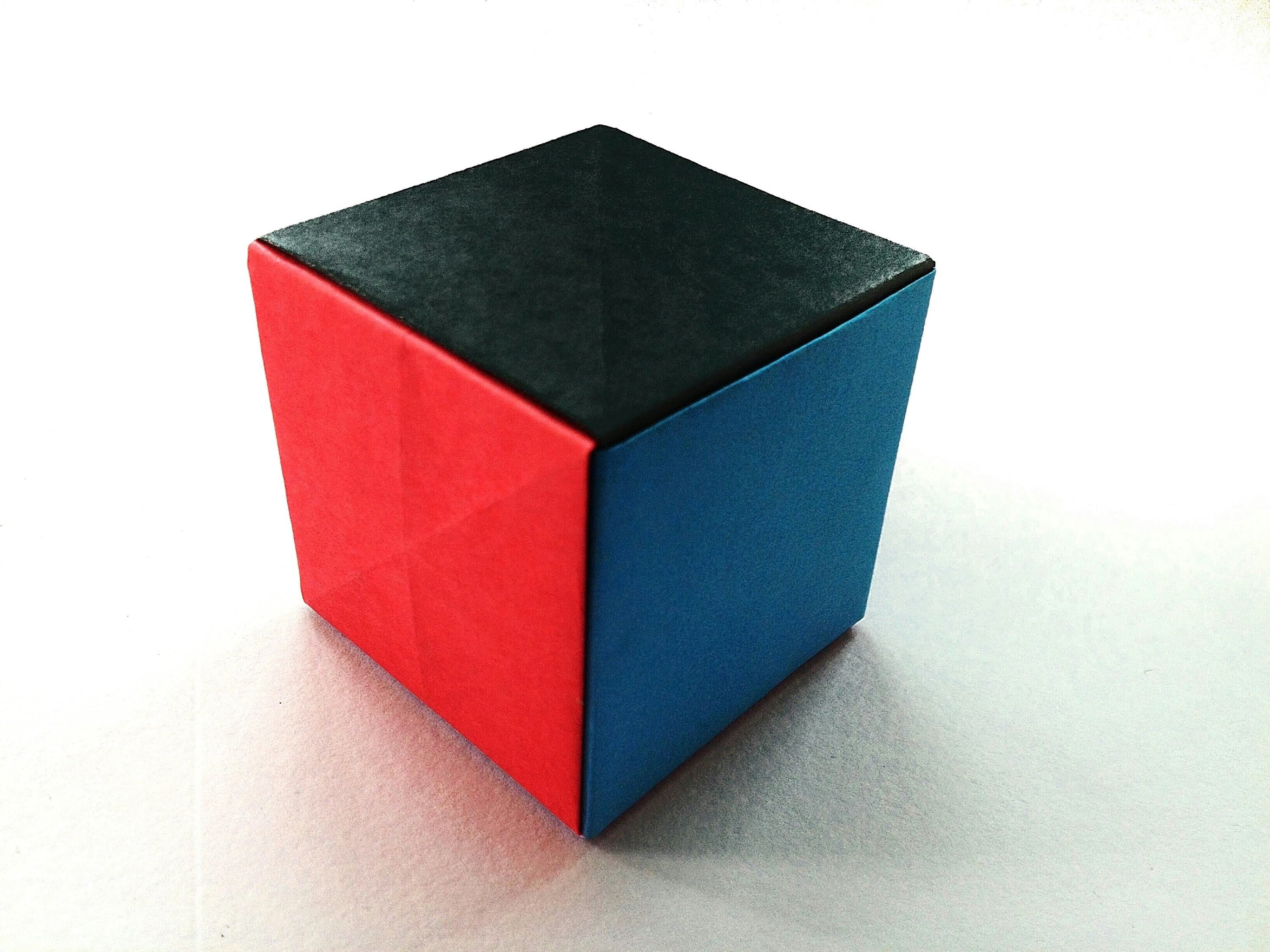
There are many, many things you could do for such a project. Explore theorems about flat origami, like Maekawa's Theorem and Kawasaki's Theorem.I recommend HATORI Koshiro's as a place to start. The history of origami: The web has several good resources for this.My web page, again, describes this see the "Exercise for Axiom O5" section. Describe how one can "fold" a parabola (and prove it).A more up-to-date list and explanation can also be found on HATORI Koshiro's web page. Describe the list of "folding axioms", as seen here.Again, look here, and scroll to the bottom. Show how origami can double a cube, which means constructing the cube root of two.(You could also try to expand the method to handle obtuse angles.) Instructions can be found here (scroll down to the middle of the page), but proving that this method works would be needed for a good project. This is interesting because angle trisections cannot be generally done using the classic tools of an unmarked straightedge and compass. Show how origami can trisect an angle.Here is one way, but there are many others.

#Modular origami projects how to

These are just the duals of geodesic spheres, and could be part of a project on Buckminster Fuller or structures like the Epcot Center's Spaceship Earth.
#Modular origami projects pdf
Make a dodecahedron out of my PHiZZ unit (other, more recent instructions can be found in PDF format here).The "math part" would involve the geometry of polyhedral solids (like the cube, tetrahedron, dodecahedron, etc.) and/or graph theory. There are lots of things to do with this. All of them require looking at other parts of my web page (or other web pages) for further details. Bingo!) The details are up to you - you can spend some time writing about how important or interesting the question is (this is called motivating the question), and in your answer you may need to provide either a mathematical proof or informative data to support your conclusion. (You pose an interesting question, and you answer it.

This provides focus to your project and usually impresses teachers and science fair judges. In other words, you should frame your project around one good question. (Or partially answering it, if it's a particularly hard question.) Major advice: Every good science fair, in-class, or other math or science project has two main components.

(If you really want me to be your or your child's teacher, apply to WNEU! :) (Or apply to MathILy, where I sometimes teach in the summer.) Sorry, but I have too many students of my own at Western New England University to work with, and they take priority. What I won't do is tell you exactly what you should do. Thus, I've created this "Origami-Math Project" advice page to help people get started. Just pick something you find interesting, and go!īut I suspect that the real question such people have is HOW to start such a project, and since I do not have a bulleted list of project ideas and instructions on how to do them, they appeal to me for help. I have to say that I'm always a bit mystified by these questions there's a lot of information and ideas for such origami projects on my web pages (and on other web pages out there), so there's no need to ask me such questions. I also get emails from college students (and sometimes graduate students!) looking for project ideas. Origami-Math Project Ideas Origami-Math Science Fair Project Adviceīy far, the most frequent email questions I get about origami-math are from parents or students (elementary, middle, and high school) asking me for science project ideas for themselves or their children.


 0 kommentar(er)
0 kommentar(er)
